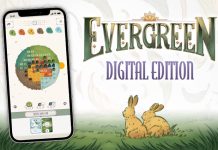 In 2007, Nate Weiner founded Read It Later, a service which allows users to save their web content to view at a later time, on their own schedule. One year ago, Read It Later had 2.5 million users and today Read It Later services 4.5 million customers with a total of over 200 million items having been saved since inception.
In 2007, Nate Weiner founded Read It Later, a service which allows users to save their web content to view at a later time, on their own schedule. One year ago, Read It Later had 2.5 million users and today Read It Later services 4.5 million customers with a total of over 200 million items having been saved since inception.
The size of the user-base is not the only big change that Read It Later has undergone over the past 4+ years, especially when it comes to smartphone and tablet device owners. In April, 2009, Read It Later launched an iPhone App (which was later updated in 2010 to add iPad support as well). This would inevitably lead to Read It Later’s integration into over 300 apps including Flipboard, Twitter, Zite and more, resulting in a dramatic shift in the way consumers used the product. Read It Later was no longer just for Web pages and articles any more. In fact, “33 percent of Read It Later’s saved items come from 3rd party apps including Twitter, Zite, Flipboard and Pulse, and 40 percent of items saved are not text articles, but popular content including videos, images, things to buy, travel tips and recipes.”.
Some other additional interesting numbers that the folks at Read It Later shared with us was that 50 percent of items saved via Read It Later are viewed on mobile screens (up from 34 percent in January). And as far as people’s daily usage habits go, “web consumption peaks in the early morning and declines through the day, as consumers dig through their inboxes and find what they want to view later. iPad use peaks at night, as users view saved content in the pre-bedtime hours. Mobile consumption maps to commuting times, as users increasingly view content in transit”. YouTube is the app’s most popular individual source of saved content.

The name change is really an attempt to adjust the product to better reflect the community’s behavior. Read It Later’s Mark Armstrong remarked, “We’ve grown beyond that name and we wanted to embrace a name that would encompass all the other uses that our users are using it for, video, images, recipes and web pages”.
“Nearly five items every second are saved to Pocket from the web and popular news apps, including videos, articles, recipes and more,” said Nate Weiner, founder of Read It Later and creator of pocket. “Pocket is the perfect name for our latest version as it expresses how simple it is to take any content users discover with them, no matter where they go.”
In a nut shell, a seamless and free, but richer and easier to use experience.
Armstrong ensured me that the re-branding should be seamless to the end user. All Pocket users will have access to every feature that current Read It Later Pro users enjoy, for FREE. Read It Later Pro users can simply update their existing Read It Later app and it will become Pocket. If you are using the existing free version of the Read It Later app, you wil have to download the new Pocket app. Since the re-branded Pocket service is completely free for all users, I asked Armstrong how they were going to be monetizing the service and all he could reveal at the moment was that there is a “bigger picture plan as far as the revenue model”.
 Your existing reading list will stay intact, you will still have the same login to access the new service. Apps that currently integrate with Read It Later, will work with Pocket as well. You may still see references to ‘Read It Later’ in third party apps until they’ve been updated with the Pocket name, but the functionality will continue to work regardless.
Your existing reading list will stay intact, you will still have the same login to access the new service. Apps that currently integrate with Read It Later, will work with Pocket as well. You may still see references to ‘Read It Later’ in third party apps until they’ve been updated with the Pocket name, but the functionality will continue to work regardless.
I’ve been checking out the new Pocket app much myself, since it just launched about an hour ago, and as you can see in the included screen shots, it is a simpler, cleaner layout offering more organizational tools and a optimized way for presenting video content. It even has a twitter-style swipe bar for quick access to per-list item tools.
Highlight’s include:
- A Cleaner, Simpler UI. The new user interface of Pocket displays all of a user’s content in a beautiful, easy-to-view layout adapted to take full advantage of high definition displays.
- Video & Image Filters. Most people save sites with videos and images, in addition to articles and text. Pocket automatically filters all content so users can quickly switch between articles, videos and images with just a tap.
- Enhanced Viewing Experience. Articles, videos and anything saved is displayed in a clean and simplified view with fewer toolbars and a redesigned full-screen mode.
- Easier to Organize. New bulk editing, favoriting and tagging modes make organizing and browsing saved items easier. Users can find content by keywords, publications or create their own custom tags.
- Favorites. Users can star favorite content so it is always available when they want to find it.
So grab yourself a free copy of Pocket and start time-shifting your apping. Once you experience the convenience Pocket offers, you’ll find yourself using it all the time!





















